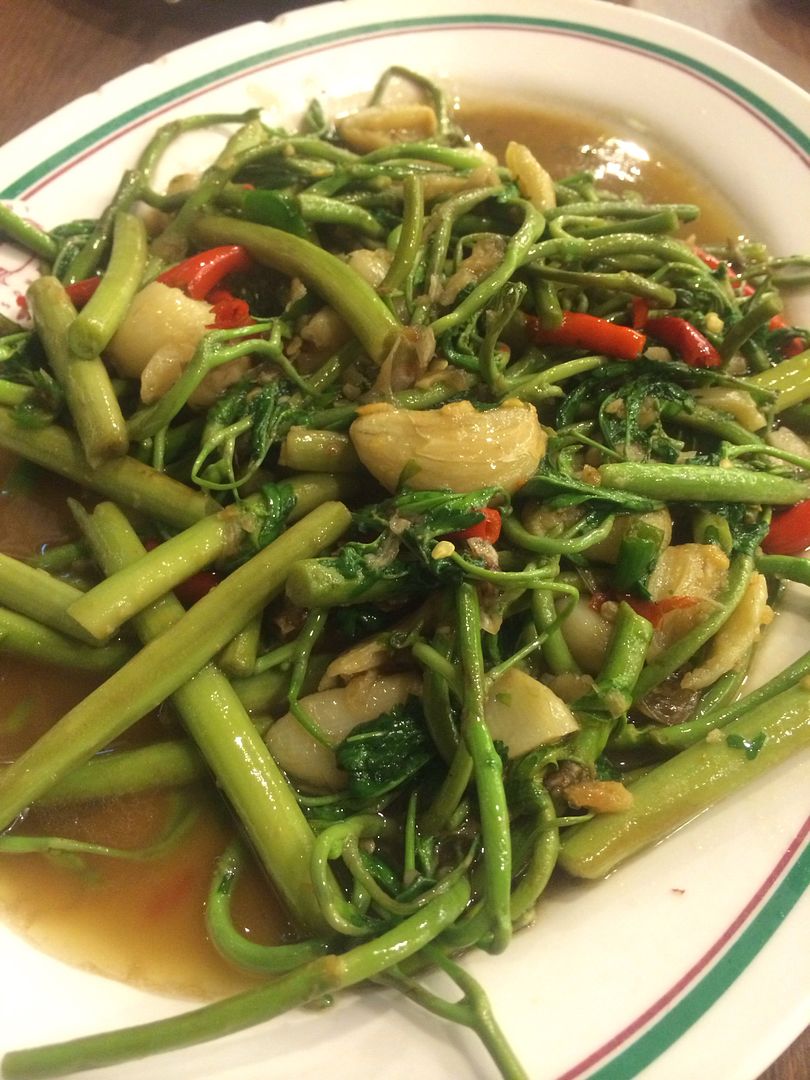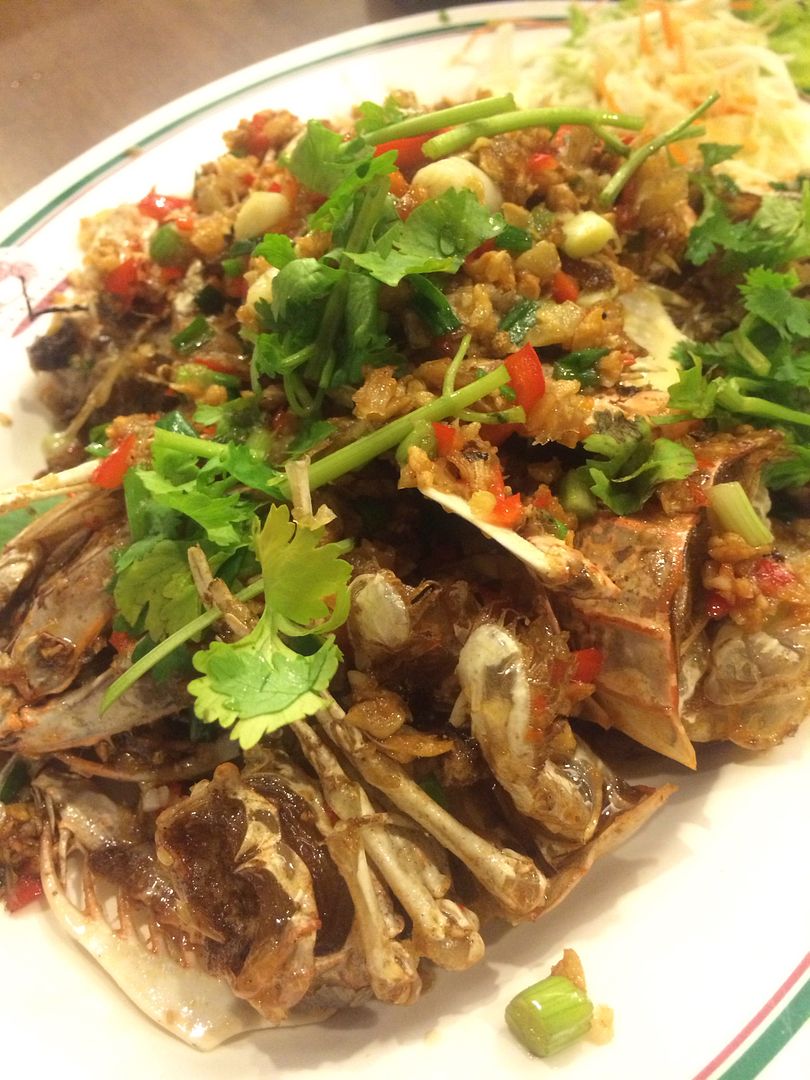Re: A Singaporean's guide to living in Land of A Thousand Smiles
Pad Thai: Thai Style Noodle Stir Fry
Posted on 05 November 2013.

<big style="border: 0px; margin: 0px; padding: 0px;">
Prepare Pad Thai sauce: For 2 servings
</big>
Pad Thai: Thai Style Noodle Stir Fry
Posted on 05 November 2013.

<big style="border: 0px; margin: 0px; padding: 0px;">
Prepare Pad Thai sauce: For 2 servings
</big>
[FONT=“Arial”]2 Big tbsp. of palm sugar
3 tbsp. concentrated tamarind juice
3 tbsp. fish sauce
2 tbsp. oyster sauce
[/FONT]
3 tbsp. concentrated tamarind juice
3 tbsp. fish sauce
2 tbsp. oyster sauce
[/FONT]
3 tbsp. concentrated tamarind juice
3 tbsp. fish sauce
2 tbsp. oyster sauce<big style="border: 0px; margin: 0px; padding: 0px;">
Prepare ingredients to cook the noodle:</big>
2 tbsp. vegetable oil
2 tbsp. minced shallot
1 tbsp. minced garlic
2 tbsp. cut yellow tofu
1 tbsp. sweet radish (minced)
2 handful thin noodle if you can’t find the specific one, just use any noodle, mung bean noodle is also good. (Soak the noodle in regular water for 2 hours)
2 eggs
1 handful of a garlic-like vegetable >>> garlic Chives/ Chinese Chives.
10 big shrimp (peeled, De-veined and cooked)<big style="border: 0px; margin: 0px; padding: 0px;">
Final Decoration:</big>
1 handful bean sprouts
1 tsp. dried red chili powder
2 tbsp. roasted peanut (crushed)
1 tsp. sugar
4-5 branches of Uuicnri leaves/ garlic Chives/ Chinese Chives.
1 piece of sliced lime


 <big style="border: 0px; margin: 0px; padding: 0px;">
<big style="border: 0px; margin: 0px; padding: 0px;">
Cooking Instructions:</big>
1. Heat the pan and add palm sugar, fish sauce, tamarind juice, oyster sauce and a little bit of water. Now used medium or low heat to let the sauce boil and thicken. Keep stirring. Make sure you don’t burn the sauce. Golden pad Thai is good pad Thai. Be careful, it will be bitter if you put max heat and burn it.
2. Taste the sauce and make it the way you like. Some people really love it to be more sweet and some just love it a little more salty but the trick of Pad Thai sauce is the proper balance of 3 tastes: sweetness, sourness and saltiness. So change it the way you like. If you like it sweet, keep the taste the way it is will be right taste for you. However, my trick is to add some Maggi brand soy sauce to make it more salty as my husband loves it that way.
3. When the sauce gets thick enough, remove from the stove.<big style="border: 0px; margin: 0px; padding: 0px;">
Next, we will cook the pad Thai noodles.
</big>1. In a different pan, heat the pan and add vegetable oil. When the pan is hot, add garlic and shallot Fry until it has a nice aromatic smell.
2. Next, add tofu and sweet radish.
3. Now, add noodles and
4 tbsp of the sauce we made earlier. (that’s for 1 serving). You can keep adding the sauce of the amount of the noodles is more than one handful. Make sure you don’t add too much because the noodle will be too wet and overcooked. (add it little by little) Then, make a quick stir.
You may want to pick the noodles out and taste them to see if the noodles are cooked properly.
4. If you like the bean sprouts and the sliced garlic Chives/ Chinese Chives to be cooked, add it in this step.
5. Push the noodles aside. Add the egg and cook it until it is half way done then mix it with the noodles. Now add shrimp and mix.
6. Turn off the fire. Arrange the noodles on a plate. Put dried chili pepper, sugar, roasted peanut, fresh bean sprouts, one piece of lemon and the garlic Chives/ Chinese Chives on the side.
Another option for Pad Thai, is to make an omelet from duck’s eggs. Make it as thin and as big as possible. Put the noodles in the middle of the omelet. Fold four sides then put another plate on top. Turn it upside down. Decorate it with bean sprouts, the genus Allium or scallion, dried chili powder, sugar, peanut, and one piece of lemon.
We call this Pad Thai with omelet in Thai language, “Pad Thai Kai Ho”. Pad Thai is a classic Thai Food dish and one that we eat a lot – a couple times per month at least. Tourists, when they come to Thailand know “Pad Thai” from the Thai food restaurants in their home country. They always seem to know to order this dish! My husband when he first came from America only knew pad thai and a couple of other dishes like yum woon sen and tom yum soup.


<big style="border: 0px; margin: 0px; padding: 0px;"><iframe src="//www.youtube.com/embed/jwudCMCd9ek?rel=0" allowfullscreen="" frameborder="0" height="360" width="480"></iframe></big>
3 tbsp. fish sauce
2 tbsp. oyster sauce<big style="border: 0px; margin: 0px; padding: 0px;">
Prepare ingredients to cook the noodle:</big>
2 tbsp. vegetable oil
2 tbsp. minced shallot
1 tbsp. minced garlic
2 tbsp. cut yellow tofu
1 tbsp. sweet radish (minced)
2 handful thin noodle if you can’t find the specific one, just use any noodle, mung bean noodle is also good. (Soak the noodle in regular water for 2 hours)
2 eggs
1 handful of a garlic-like vegetable >>> garlic Chives/ Chinese Chives.
10 big shrimp (peeled, De-veined and cooked)<big style="border: 0px; margin: 0px; padding: 0px;">
Final Decoration:</big>
1 handful bean sprouts
1 tsp. dried red chili powder
2 tbsp. roasted peanut (crushed)
1 tsp. sugar
4-5 branches of Uuicnri leaves/ garlic Chives/ Chinese Chives.
1 piece of sliced lime



Cooking Instructions:</big>
1. Heat the pan and add palm sugar, fish sauce, tamarind juice, oyster sauce and a little bit of water. Now used medium or low heat to let the sauce boil and thicken. Keep stirring. Make sure you don’t burn the sauce. Golden pad Thai is good pad Thai. Be careful, it will be bitter if you put max heat and burn it.
2. Taste the sauce and make it the way you like. Some people really love it to be more sweet and some just love it a little more salty but the trick of Pad Thai sauce is the proper balance of 3 tastes: sweetness, sourness and saltiness. So change it the way you like. If you like it sweet, keep the taste the way it is will be right taste for you. However, my trick is to add some Maggi brand soy sauce to make it more salty as my husband loves it that way.
3. When the sauce gets thick enough, remove from the stove.<big style="border: 0px; margin: 0px; padding: 0px;">
Next, we will cook the pad Thai noodles.
</big>1. In a different pan, heat the pan and add vegetable oil. When the pan is hot, add garlic and shallot Fry until it has a nice aromatic smell.
2. Next, add tofu and sweet radish.
3. Now, add noodles and
4 tbsp of the sauce we made earlier. (that’s for 1 serving). You can keep adding the sauce of the amount of the noodles is more than one handful. Make sure you don’t add too much because the noodle will be too wet and overcooked. (add it little by little) Then, make a quick stir.
You may want to pick the noodles out and taste them to see if the noodles are cooked properly.
4. If you like the bean sprouts and the sliced garlic Chives/ Chinese Chives to be cooked, add it in this step.
5. Push the noodles aside. Add the egg and cook it until it is half way done then mix it with the noodles. Now add shrimp and mix.
6. Turn off the fire. Arrange the noodles on a plate. Put dried chili pepper, sugar, roasted peanut, fresh bean sprouts, one piece of lemon and the garlic Chives/ Chinese Chives on the side.
Another option for Pad Thai, is to make an omelet from duck’s eggs. Make it as thin and as big as possible. Put the noodles in the middle of the omelet. Fold four sides then put another plate on top. Turn it upside down. Decorate it with bean sprouts, the genus Allium or scallion, dried chili powder, sugar, peanut, and one piece of lemon.
We call this Pad Thai with omelet in Thai language, “Pad Thai Kai Ho”. Pad Thai is a classic Thai Food dish and one that we eat a lot – a couple times per month at least. Tourists, when they come to Thailand know “Pad Thai” from the Thai food restaurants in their home country. They always seem to know to order this dish! My husband when he first came from America only knew pad thai and a couple of other dishes like yum woon sen and tom yum soup.


<big style="border: 0px; margin: 0px; padding: 0px;"><iframe src="//www.youtube.com/embed/jwudCMCd9ek?rel=0" allowfullscreen="" frameborder="0" height="360" width="480"></iframe></big>





